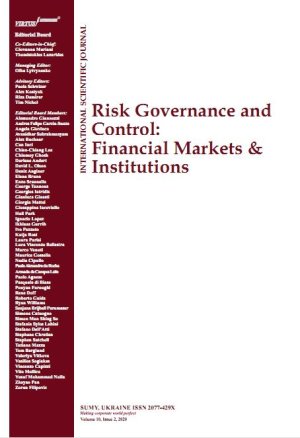
FINANCIAL PERFORMANCE AFTER THE SPANISH BANKING REFORMS: A COMPARATIVE STUDY OF 19 COMMERCIAL BANKS
Download This ArticleAbstract
A diagnostic review of the Spanish financial system during the 2008 financial crisis reveals the emergency need for banking reform in the sector. In an attempt to evaluate the impact of the Spanish reform, the present study examines the bank´s performance before/after the reform was adopted, using data of 19 Spanish commercial banks extracted from the Global Vantage research database (Standard and Poor’s) over the period 2006 to 2013. This study uses multivariable regression method to investigate the impact of the CAMELS rating system: capital adequacy, asset quality, management quality, liquidity and sensitivity to market risks on the bank´s performance such as earnings efficiency. The time-line of the study is essential because it helps us to determine the financial performance of Spanish commercial banks before the banking reforms during the financial crisis and an important set in terms of mergers and acquisition in the banking industry. The empirical results have found strong and positive evidence that Capital Adequacy, Management Capacity, Liquidity and Sensitivity to Market Risk are useful predictors of banks performance (earnings efficiency), thus, any reform pilot toward this banking indicators will eventually have a positive impact on banking performance. Base on the present study, the Spanish reform was so vital for better banking performance. Therefore, this study serves not only to academics but also to policy makers.
Keywords: Bank’s Performance, Commercial Banks, CAMELS, Spanish Financial System, Financial Crisis
How to cite this paper: Pison, F.I., Cibrán, F.P., & Ntoung, A.T.L. (2014). Financial performance after the Spanish banking reforms: A comparative study of 19 commercial banks. Risk governance & control: financial markets & institutions, 4(2), 70-82. https://doi.org/10.22495/rgcv4i2art6



















